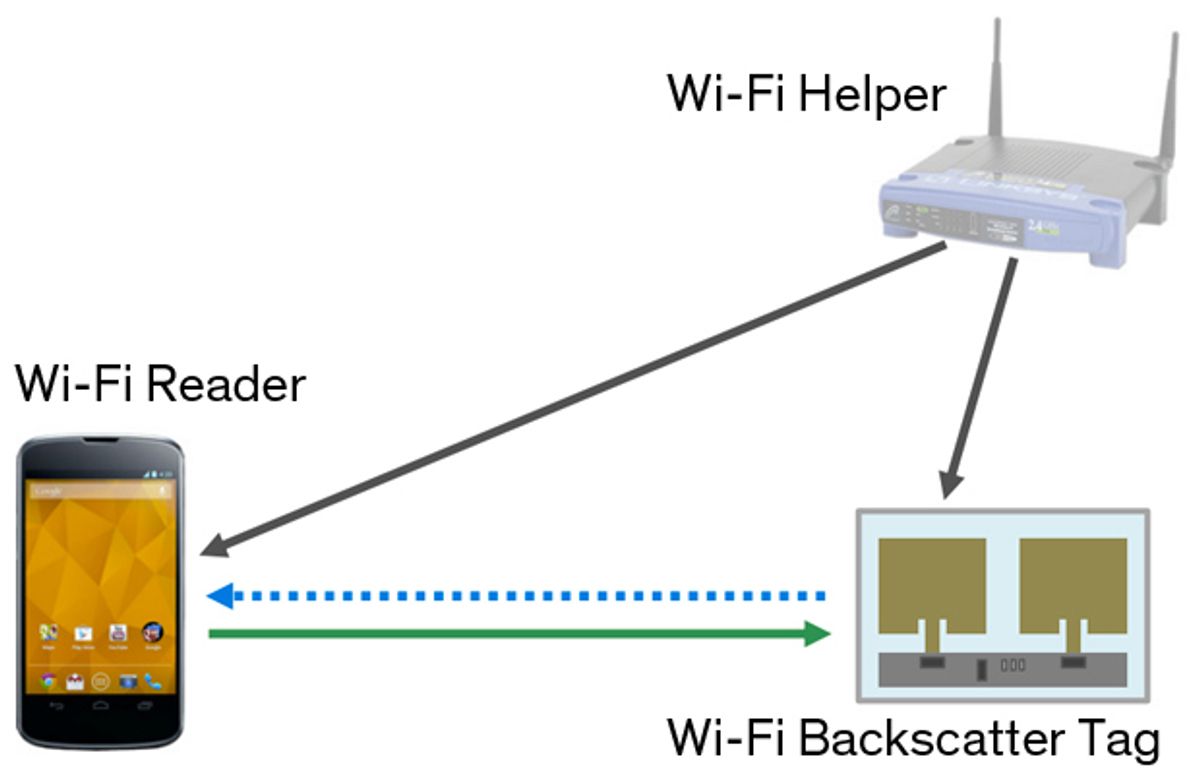Researchers may have solved a key problem underlying the emerging “Internet of Things” (IoT): How can these “Things” talk back to their networks? The answer could be by reflecting the ambient signals from conventional Wi-Fi routers.
Forecasts about the Internet of Things—the idea that cars, appliances, clothes, and other devices will all soon be wired in to the ‘Net—mean little if IoT devices still require batteries or plugged-in power supplies to operate. Smartphones and laptops fully occupy many households’ power outlets, having already laid claim with their charging stations and the requisite tangled scads of plugs, cord,s and connectors. Charging or changing batteries on many more devices around the home or workplace would, for most consumers, present too much bother for too little return.
So if the IoT is to be adopted in everyday consumer applications, much of the data transfer will need to go on in the background and without the help of batteries. IEEE Spectrum has previously covered advances in batteryless computing and even batteryless cryptographic security. Limited computing in batteryless devices has generally been possible using harvested radio-frequency power from ambient TV, radio, cellphone, and Wi-Fi signals—and in the case of RFID chips, from the occasional jolt supplied by a nearby RFID reader.
However, as a video describing the new research explains, the operating power batteryless devices require for wireless communications is two or three orders of magnitude higher than they can passively harvest. As a result, small batteryless IoT devices (such as some wearables or sensor motes around a house) have to date behaved less like full-fledged members of an active local network and more like children in 19th century novels, quietly brooding away and speaking only when directly spoken to.
This month, though, Joshua Smith and colleagues in the departments of electrical engineering and computer science at the University of Washington in Seattle reported that they have prototyped a different approach to batteryless device connectivity. Instead of generating their own signals, their batteryless WiFi Backscatter chips transmit their bits by either reflecting or not reflecting a Wi-Fi router’s signals.
“You might think, how could this possibly work when you have a low-power device making such a tiny change in the wireless signal?” Smith said in a statement accompanying the research. “But the point is, if you’re looking for specific patterns, you can find it among all the other Wi-Fi reflections in an environment,” (The group’s will present the research at the SIGCOMM 2014 annual meeting in Chicago which will take place from 17 to 22 August.)
That said, however, the essential idea behind the scheme—making batteryless devices reflectors of existing signals rather than transmitters of their own unique signals—may at first blush seem insufficient for scaling up to even a single household where possibly hundreds of batteryless network nodes could exist.
The paper offers some initial thoughts about that. First, it says, Internet communications is typically “bursty.” So perhaps multiple backscatter nodes seeking to communicate with the network can just wait their turn until the channel’s clear.
Second, most tiny, batteryless devices don’t have much data to transmit even when they do have something to say. So a little bit of connectivity in this context could still go a long way.
“Establishing a communication link between WiFi Backscatter tags with existing Wi-Fi devices, albeit at a low rate, is [still] beneficial for a large class of Internet-of-Things applications,” the researchers say.
Margo Anderson is the news manager at IEEE Spectrum. She has a bachelor’s degree in physics and a master’s degree in astrophysics.



